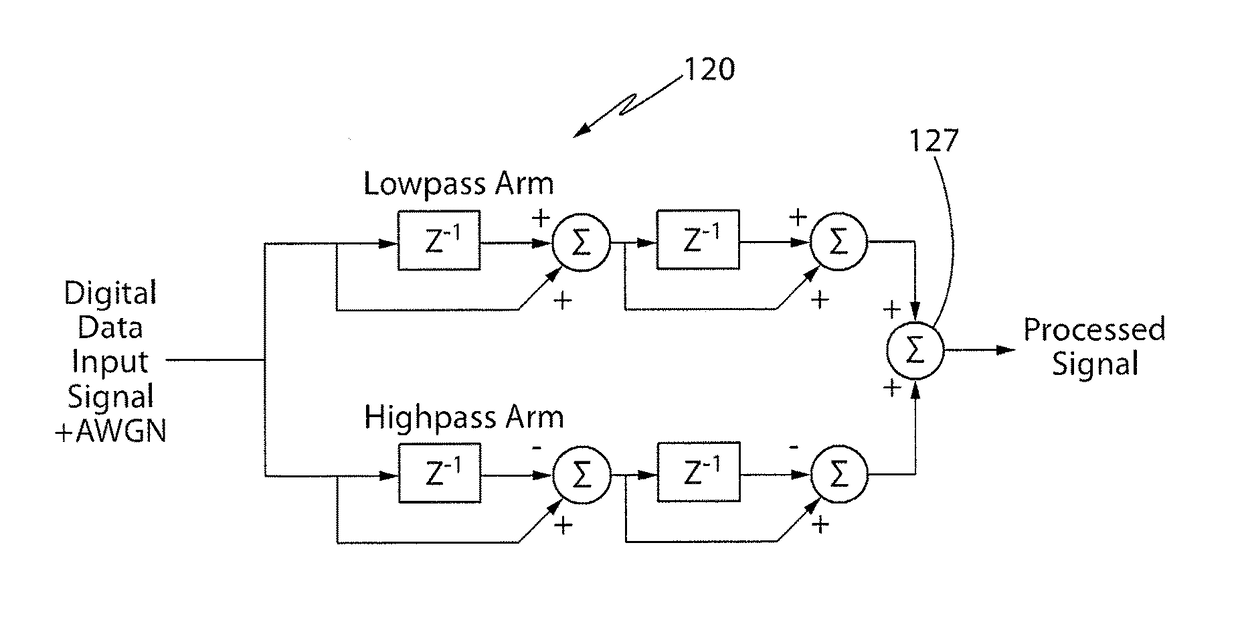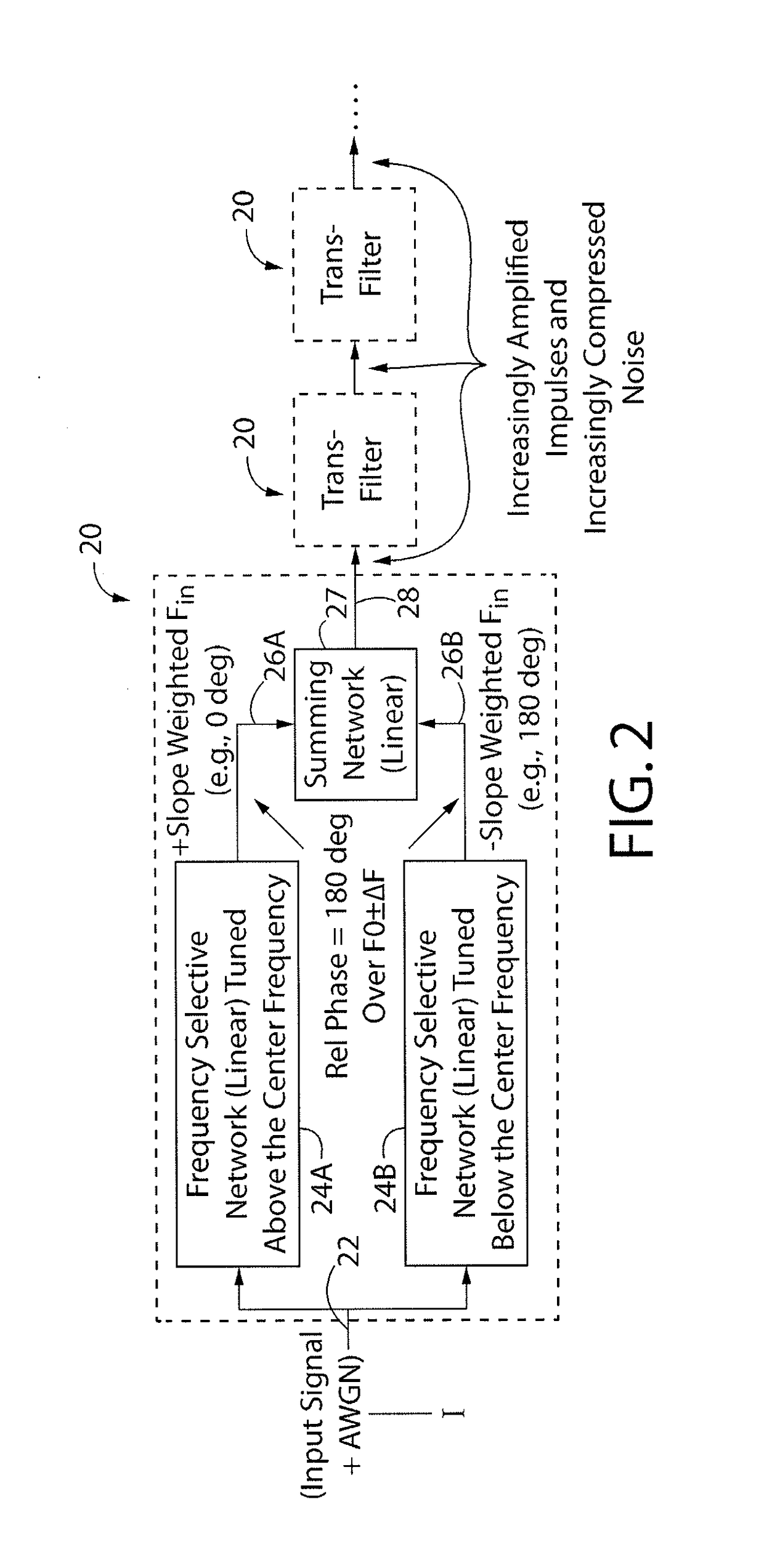A filter that minimizes in-band noise and maximizes detection sensitivity of exponentially-modulated signals
a detection sensitivity and exponential modulation technology, applied in the field of devices, can solve the problems of no threshold, limited to matched filter performance, and devices introduce non-linearities, and achieve the effect of compressing the noise in the signal band, and increasing the amplitude of impulses
- Summary
- Abstract
- Description
- Claims
- Application Information
AI Technical Summary
Benefits of technology
Problems solved by technology
Method used
Image
Examples
Embodiment Construction
[0050]Referring now to the figures, wherein like reference numerals represent like parts throughout the several views, exemplary embodiments of the present disclosure will be described in detail. Throughout this description, various components may be identified having specific values, these values are provided as exemplary embodiments and should not be limiting of various concepts of the present invention as many comparable sizes and / or values may be implemented.
[0051]The trans-filter 20 minimizes in-band noise and maximizes detection sensitivity of exponentially-modulated signals 20 by eliminating the threshold phenomenon that limits detection sensitivity of exponentially modulated signals (also referred to as “angle modulated signals”). It accomplishes this by elimination of nonlinear circuit elements (e.g., diodes, transistors, non-linear magnetics, etc.) used in conventional exponential modulation detectors such as phase or frequency discriminators.
[0052]The filter 20 is a linea...
PUM
 Login to View More
Login to View More Abstract
Description
Claims
Application Information
 Login to View More
Login to View More - R&D
- Intellectual Property
- Life Sciences
- Materials
- Tech Scout
- Unparalleled Data Quality
- Higher Quality Content
- 60% Fewer Hallucinations
Browse by: Latest US Patents, China's latest patents, Technical Efficacy Thesaurus, Application Domain, Technology Topic, Popular Technical Reports.
© 2025 PatSnap. All rights reserved.Legal|Privacy policy|Modern Slavery Act Transparency Statement|Sitemap|About US| Contact US: help@patsnap.com



